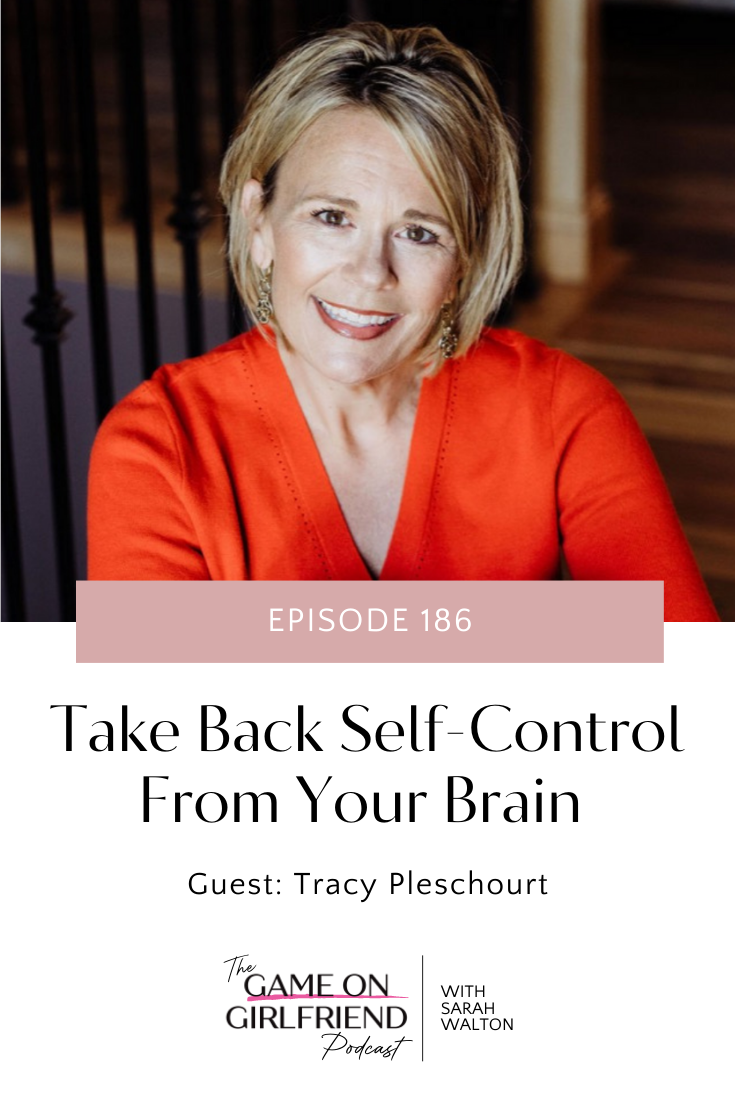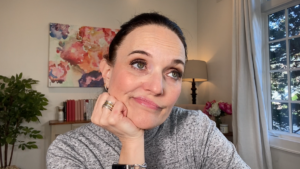Episode 186: The Art of Self-Control with Tracy Pleschourt

Beautiful people! As you know, I believe our beliefs and thoughts dictate our results. I’m excited to share this conversion with Tracy Pleschourt, a life coach and founder of Self-MadeU where she teaches people the concept of self-control. She talks about self-control almost like it's a math equation -- she's got such a unique angle to it and always brings in her own experiences.
We've all had those moments. You're going through your day; things are just gorgeous. You're doing everything you need to do and then you have that one thought and it takes you completely off course. It might be something like “I suck! Who do I think I am?” or maybe it’s “I really deserve this one glass – no this entire bottle of wine tonight.”
Taking back control in moments of self-doubt
Tracy has made it her life's work to help all of us understand what to do in that moment and how to apply change quickly. Just a few years ago, Tracy was a successful advertising executive. Stifled by the rigorous, time-consuming demands of the corporate world, she traded in her 20 years of advertising to pursue her real passion: personal and professional coaching.
As she made the switch, she noticed thoughts of self-doubts starting to creep in. The narratives like “you don’t know what you’re doing,” imposter syndrome, and lack of control. She started pinpointing that unwanted feeling and figured out what she refers to as the “math in your mind” that is creating self-doubt. From there, she created a system to help create a sense of control and achieve results for herself and her coaching business.
“If you don't understand that you do have this control, you will experience this unwanted feeling and therefore create unwanted results for you across the board. And that's only because you haven't yet been taught [how to tap into self control],” says Tracy.
Learning how to think
Tracy says everyone has the ability to learn how to create the results they want. The problem is, they’ve never been taught how. She pointed to her two children, both of whom have graduated from college noting that neither were taught how to go out into the world and achieve the goals they most desire. They did not graduate with a skill set to solve their own problems.
“They have been taught what to think; they have not been taught how to think. When I recognized that, I recognized that was the cause of all my problems as well,” says Tracy. “What every human being needs is to learn how to think about what it is that you most desire. They need to be taught how to think about overcoming the challenges in their life.”
The lightbulb moment for Tracy came when she studied to be a life coach under Brooke Castillo. She was listening to one of Castillo’s podcasts and heard her say that 100% of the time your thoughts drive the feelings or emotions you experience, and then those emotions create your behavior.
Most people think that actions create feelings or a result creates the feelings. They don’t recognize that their feelings are not due to any one circumstance – they’re due to how you’re thinking about the circumstance.
Mind Over Matter Formula
From that lightbulb moment, Tracy created what she calls the mind-math formula. You start to see that when you literally can put [your thoughts] + [your feelings] = your actions down on paper, your experience unfolds in black and white. There is no arguing the math. You've now got the evidence that your brain needs so desperately to want to believe something.
The mind-math formula becomes a tool for people to ask themselves questions that really reveals how dramatic their unintentional thinking is and how that thinking leads to experiences that, most often, they wish they didn’t have.
Putting it on paper, you can be more intentional. Then you realize how much control you have over your thoughts, your feelings, your behavior, and your results.
Primitive brain thoughts
Tracy notes it’s very common for human beings to be operating from their primitive brain – the part that tries to keep you safe and alive. It’s constantly scanning for danger, it’s trying to avoid pain, it’s seeking pleasure.
It also thinks the same thoughts over and over. It’s like being on autopilot. You don’t have to think to breathe; you do it automatically. But this can also sabotage you when you aren’t in any danger.
Maybe you’re trying to connect with new clients. Your brain might start telling you that you can’t really help them. You don’t have the expertise. But you’re not actually in danger; you don’t need to be listening to that part of your brain. The problem is it becomes so habitual that it creates neural pathways where these thoughts get repeated.
What Tracy teaches people to do is to recognize and notice the thoughts and then circumvent them before they cause a result they don’t want. The next step is the application. Tracy says the education aspect is 20% of the ability to create the results you want. The rest is application. You need to put things into practice, ask yourself what worked and what didn’t work. You refine the process until it’s a best practice to achieve the result you want.
Gap between thoughts and action
Closing the gap between education and application can be difficult for people. Tracy says part of it could be not really recognizing or being honest with what it is you’re actually thinking. And the foundation lies in understanding yourself.
What was it that I was thinking? What is it that I believe -- because of these neural pathways that were very well-established probably as a young child -- that I am reacting to and are creating my results?
There can be a spectrum of beliefs that get in the way. Tracy points to a weight-loss program as an example. If people think that calories in and out are the only factor for weight loss they likely won’t be successful. People might be operating from ideas like “you must clean your plate before ordering dessert,” or “you always have appetizers at a restaurant.”
““It really does require you to get honest and dive deep in understanding. How did you get to where you’re currently at? What has created your current experience?” asks Tracy.
Taking back control in the moment
Understanding which thoughts are driving the show can be difficult. Tracy highlights an example where someone might want to stop pouring that glass of wine every night – an experience she’s also gone through.
In her experience, Tracy realized that her thoughts of “I deserve this. Today was hard, I need this,” were causing her to drink more than she wanted. She realize the thoughts made her feel entitled. In some cases, she says it was like cognitive dissonance to realize she wanted to drink more moderately, but she kept pouring the wine.
She says it’s because she still believed the thought that she need the drink to help her take the stress off. That feeling of entitlement was the root cause she had to reconcile to reach a new result.
“You have to understand what your thoughts are leading to in regard to an emotion and how those emotions have you behaving. There is a neuro pathway that's very well-established that looks like a habit,” says Tracy.
It’s not because you’re broken; it’s not because you’re a bad person. It’s because your primitive brain is in the driver’s seat.
When you’ve got that thought of “I need to take the edge off” you question what else you can do in that moment. It can take a matter of seconds to question those thoughts and that in turn extinguishes the urge you’re having.
Free gift for listeners
The “Mind Over Matter” video series will teach you how to achieve your goals with SELF Control. This $27 offer is a life changer, and your audience can get it at 50% off using coupon code GOGPODCAST.




